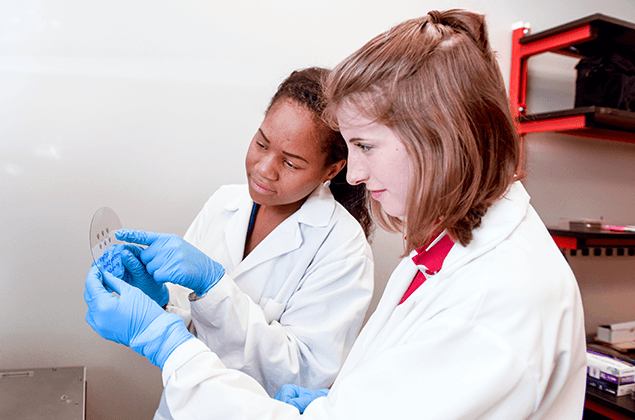
ASSIST makes progress with testbed, other technologies
Year four saw breakthroughs and new directions in research for the Nanosystems Engineering Research Center for Advanced Self-Powered Systems of Integrated Sensors and Technologies (ASSIST). The National Science Foundation Engineering Research Center le …
October 4, 2016 ![]() cjbrown8
cjbrown8
Year four saw breakthroughs and new directions in research for the Nanosystems Engineering Research Center for Advanced Self-Powered Systems of Integrated Sensors and Technologies (ASSIST).
The National Science Foundation Engineering Research Center led by NC State’s Department of Electrical & Computer Engineering and headquartered on Centennial Campus is building hassle-free wearable devices “that are doing not just something that’s cool, but something that’s really important,” said Dr. Veena Misra, ASSIST’s director. “The big vision that we have is to build technologies that make a difference in your wellness.”
ASSIST research will take wearables from gadgets that count your steps and help you find your way home after a run to integrated, self-powered health monitoring systems that provide detailed information on what is happening in a patient’s body and take readings from the surrounding environment.
ASSIST is making important progress on one of its two testbeds (platforms into which different tools for measuring health can be built) and on the technologies that enable those testbeds, which also have value beyond the ASSIST platform. Sensors being developed by ASSIST and the technology that allows them to talk to each other, for example, have broader uses for the Internet of things in which everyday objects can be networked together to function at a higher level.
To make these platforms work, ASSIST researchers are extracting more power from the human body, creating sensors and antennas that run on ultra-low power and resilient and functional materials that make actually wearing an ASSIST device a comfortable experience.
The Health and Environmental Tracker testbed consists of a wristband, a patch that adheres to an asthma patient’s chest and a nonwearable spirometer that takes breathing measurements. The system measures environmental factors – including volatile organic compounds and ozone in the air as well as ambient humidity and temperature – along with the wearer’s motion and heart rate and the amount of oxygen in the blood.
ASSIST researchers described their progress in a paper published in the spring. The next steps are producing enough prototypes to conduct large scale clinical trials and, eventually, to find a partner to manufacture the system and get it into the hands of physicians and patients.
Once the platforms are perfected, the ways in which they can be used to measure human health can grow. The center is moving into sweat research, for example, and using nanocellulose to extract sweat from the skin and test for glucose and lactates without causing the wearer any discomfort. A next step would be removing interstitial fluid from just under the skin in a non-invasive way.
What’s next? What if these technologies can be implanted under a patient’s skin so she doesn’t have to wear anything? ASSIST is embarking on a research project jointly with biotechnology company Profusa and funded by the Defense Advanced Research Projects Agency on an implantable sensor.
“We are trying to build new directions for ASSIST that rely on the strength of ASSIST but also help us get into spaces where our technology can be really useful, such as implantables,” Misra said.

